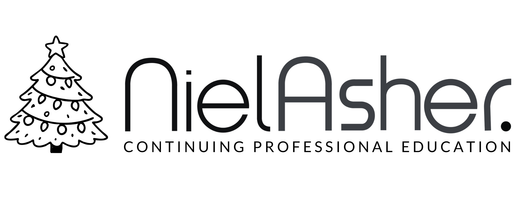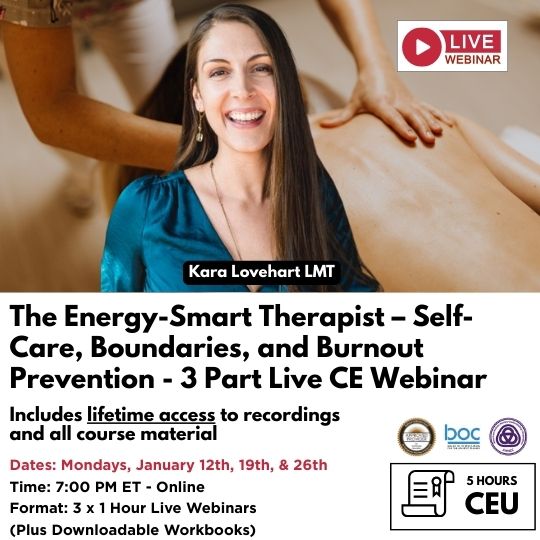Bowen Therapy for Common Shoulder Conditions: An Informal Guide for Massage and Rehab Therapists
Hello, everyone! Let’s talk about something a bit different today—Bowen Therapy—and how it can be used to address common shoulder conditions. Now, I know Bowen Therapy isn’t as widely known as some other modalities, but it’s one that’s gaining attention for its gentle, non-invasive approach and surprising effectiveness. For those of you working with clients dealing with shoulder pain, muscle tension, or restricted movement, this could be an amazing addition to your toolkit.
We’re going to dive into what Bowen Therapy is, how it works, and how it can help with shoulder issues—whether that’s tightness, rotator cuff problems, or impingement. And to make things even more practical, I’ll be referencing a short video clip with John Wilks, where he demonstrates a specific Bowen move for the superficial deltoid muscles. This move is one example of how Bowen can gently encourage the body to heal itself without deep pressure or forceful manipulation.
Let’s break it down!
What is Bowen Therapy?
First things first—what exactly is Bowen Therapy?
Bowen Therapy, also called The Bowen Technique, is a gentle bodywork technique developed by Tom Bowen in Australia in the mid-20th century. It’s unlike other forms of massage or physical therapy in that it involves light, rolling movements over muscles, tendons, and soft tissue. The goal is to stimulate the body’s natural healing mechanisms.
Here’s the fascinating part: it’s not just about the muscles being worked on directly—it’s about affecting the whole nervous system and bringing the body into balance. Bowen Therapy is often referred to as a “reset” for the body. Therapists work in specific sequences, applying small, deliberate moves, then leaving short pauses (yes, intentional pauses!) for the body to respond. These pauses allow the nervous system to process the signals and begin healing.
For shoulder conditions, this light touch can be a welcome relief, especially for clients who may find deep tissue work too painful or those who are overly sensitive to more intense techniques.
Bowen Therapy and the Shoulder Complex: Why It Works
Now, let’s get into the nitty-gritty—why does Bowen Therapy work so well for shoulder conditions?
The shoulder is an incredibly complex joint, with a wide range of motion. But as we all know, with great flexibility comes vulnerability. Shoulder pain, stiffness, and limited mobility are some of the most common complaints we hear from clients—whether it’s from overuse, poor posture, or specific injuries like rotator cuff tears, frozen shoulder, or impingement.
Bowen Therapy excels here because:
- It’s gentle: Clients with severe pain or inflammation in the shoulder often benefit from Bowen because it doesn’t involve heavy pressure or manipulation. For someone with a frozen shoulder, for example, Bowen allows for treatment without aggravating the already tense muscles and tissues.
- It works with the body’s natural healing processes: Instead of forcing the shoulder back into place or aggressively working through muscle knots, Bowen gently prompts the nervous system to relax tight muscles and restore movement.
- It’s holistic: Bowen isn’t just about the shoulder—it’s about the whole body. Often, when we’re treating shoulder pain, we need to address the neck, upper back, and even the hips for proper alignment. Bowen moves are designed to help the body find balance, which can lead to relief in more than just the shoulder area.
Common Shoulder Conditions Bowen Therapy Can Help With
Alright, now that we know what Bowen Therapy is and why it’s effective, let’s look at some specific shoulder conditions where it can be applied.
1. Frozen Shoulder (Adhesive Capsulitis)
Ah, frozen shoulder. If you’ve worked with clients who have this, you know how frustrating it can be for them—and for you as the therapist. The shoulder becomes stiff, painful, and loses its range of motion, often for months or even years. Traditional treatment for frozen shoulder usually involves physical therapy, stretching, and sometimes even surgery.
But here’s where Bowen comes in as a game-changer. Instead of aggressive stretching or forceful manipulation, Bowen moves on the deltoid, trapezius, and infraspinatus muscles can gently help release tension and restore mobility over time. One of the main benefits is that Bowen can be done in the acute phase of frozen shoulder, when pain is high and movement is severely restricted.
In the video with John Wilks, the focus is on the superficial deltoid, which plays a role in shoulder abduction (lifting the arm to the side). By working gently in this area, Bowen can help soften the muscles and reduce the protective muscle guarding that often happens with frozen shoulder.
2. Rotator Cuff Injuries
The rotator cuff is a group of four muscles that stabilize the shoulder. Injuries to these muscles (often the supraspinatus and infraspinatus) are common, especially in athletes or those who perform repetitive overhead movements. Whether it’s a strain, tear, or impingement, these injuries can be incredibly painful and limit movement.
While traditional therapies often focus on strengthening the rotator cuff muscles, Bowen Therapy can offer a more gentle approach to start with, especially if the client is in pain. Bowen moves over the trapezius and deltoid muscles can help reduce muscle tension and inflammation, allowing the shoulder to move more freely without forcing the muscles to work too hard too soon.
In practice, I’ve found that combining Bowen with light exercises or physical therapy can speed up recovery for clients with rotator cuff issues.
3. Shoulder Impingement
Shoulder impingement occurs when the tendons of the rotator cuff get compressed, often leading to pain when lifting the arm or reaching overhead. This is where Bowen really shines. Because Bowen works to reset the nervous system and relax the muscles, it can relieve the tension that’s causing the tendons to rub against the acromion.
By gently working the trapezius, deltoid, and pectoralis muscles, Bowen Therapy helps open up the space in the shoulder, allowing the tendons to glide more smoothly. The great thing about Bowen is that it can be done even when the client is experiencing pain—there’s no need to push through the pain to see results.
How Bowen Therapy is Applied: What to Expect in a Session
If you’re new to Bowen Therapy, you might be wondering, “What does a session actually look like?” So, let’s walk through what you and your clients can expect.
1. The Initial Assessment
A Bowen session always starts with a thorough assessment. Because the goal is to work holistically, a Bowen therapist will look at how the entire body is moving, not just the shoulder. This is where you’ll notice the focus isn’t just on the painful area but on how the body is compensating and where other tension points might be.
2. The Moves
Here’s where Bowen Therapy stands apart. Instead of deep, sustained pressure or manipulative adjustments, Bowen uses small, rolling movements over the muscles, tendons, and fascia. These moves are light but precise, and they target the nervous system rather than just the muscles.
For example, in treating shoulder pain, you might start with moves over the upper trapezius and scapula, followed by the deltoid and supraspinatus muscles. Each move is designed to encourage relaxation and balance in the muscle and fascia.
3. The Pauses
This is one of the most unique aspects of Bowen Therapy—there are deliberate pauses between moves. These pauses are important because they give the body time to respond and integrate the signals being sent to the nervous system. So don’t be surprised if a therapist makes a few moves, then steps back for a minute or two. This isn’t about waiting for the body to relax—it’s about waiting for the body to start its own healing process.
4. Gentle, Holistic Approach
Unlike some other manual therapies, Bowen doesn’t force anything. It’s a process of encouraging the body to return to balance, making it ideal for clients who are sensitive, in pain, or dealing with chronic conditions that flare up.
Bowen Therapy: Supporting the Therapist-Client Relationship
One of the reasons Bowen Therapy resonates so deeply with therapists is that it doesn’t overwhelm the body or the therapist-client relationship. It’s a cooperative approach, where the therapist is working with the body’s natural healing capabilities, rather than imposing force. For clients who are nervous about pain or skeptical of aggressive therapies, Bowen can be a calming, reassuring treatment option.
Conclusion: Why Bowen Therapy is Worth Considering for Shoulder Conditions
So, is Bowen Therapy worth adding to your toolbox for treating shoulder conditions? I would say absolutely. While it may not be as widely known as some other modalities, it offers a gentle, effective way to address common shoulder problems like frozen shoulder, rotator cuff injuries, and impingement.
For clients who are in pain or can’t tolerate deep pressure, Bowen is a breath of fresh air. It works with the body’s natural rhythms to promote healing, and because it’s so gentle, it can be used at any stage of injury recovery.
If you’re curious about how it works, I highly recommend checking out the video clip above with John Wilks demonstrating Bowen moves for the superficial deltoid. It’s a perfect example of how subtle movements can have a profound effect on the body.
Ready to Dive Deeper?
If you're interested in diving deeper into Bowen Therapy and learning more about its practical applications, particularly for treating shoulder conditions, I highly recommend checking out John Wilks' online courses. John is a renowned expert in Bowen Therapy, and his courses offer a wealth of knowledge, from foundational techniques to advanced applications in clinical settings. These courses are perfect for massage therapists, rehabilitation specialists, and anyone looking to enhance their skills in gentle, effective bodywork.
Disclaimer: This blog is for informational purposes only and is not intended as a substitute for professional medical advice, diagnosis, or treatment. Always consult with a qualified healthcare provider before starting any new treatment techniques. The therapies mentioned should be applied by trained professionals, and individual results may vary based on the condition being treated. If you or your clients are experiencing significant pain or health concerns, seek appropriate medical consultation.
About Niel Asher Education
Niel Asher Education (NAT Global Campus) is a globally recognised provider of high-quality professional learning for hands-on health and movement practitioners. Through an extensive catalogue of expert-led online courses, NAT delivers continuing education for massage therapists, supporting both newly qualified and highly experienced professionals with practical, clinically relevant training designed for real-world practice.
Beyond massage therapy, Niel Asher Education offers comprehensive continuing education for physical therapists, continuing education for athletic trainers, continuing education for chiropractors, and continuing education for rehabilitation professionals working across a wide range of clinical, sports, and wellness environments. Courses span manual therapy, movement, rehabilitation, pain management, integrative therapies, and practitioner self-care, with content presented by respected educators and clinicians from around the world.
Known for its high production values and practitioner-focused approach, Niel Asher Education emphasises clarity, practical application, and professional integrity. Its online learning model allows practitioners to study at their own pace while earning recognised certificates and maintaining ongoing professional development requirements, making continuing education accessible regardless of location or schedule.
Through partnerships with leading educational platforms and organisations worldwide, Niel Asher Education continues to expand access to trusted, high-quality continuing education for massage therapists, continuing education for physical therapists, continuing education for athletic trainers, continuing education for chiropractors, and continuing education for rehabilitation professionals, supporting lifelong learning and professional excellence across the global therapy community.

Continuing Professional Education
Looking for Massage Therapy CEUs, PT and ATC continuing education, chiropractic CE, or advanced manual therapy training? Explore our evidence-based online courses designed for hands-on professionals.


















